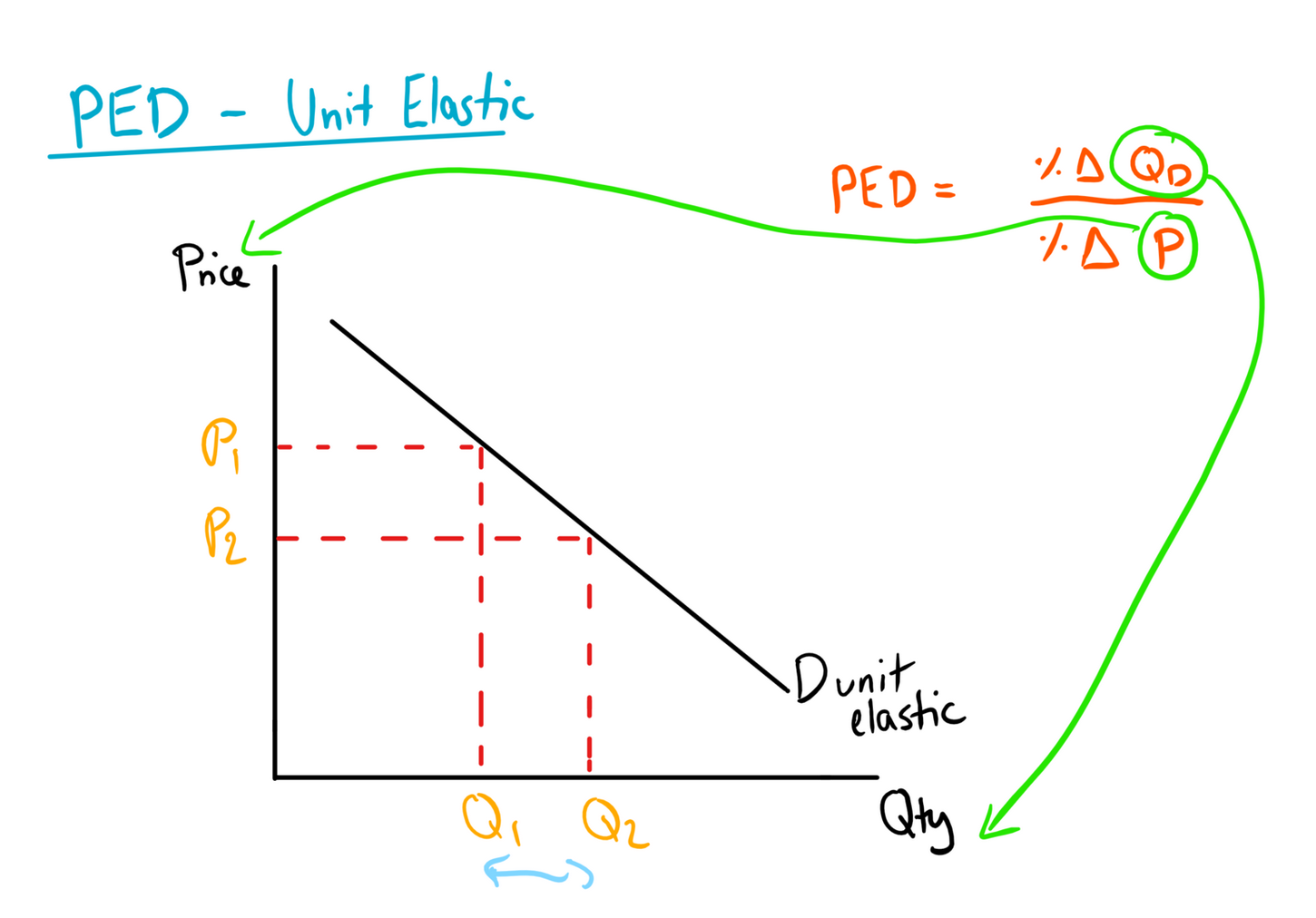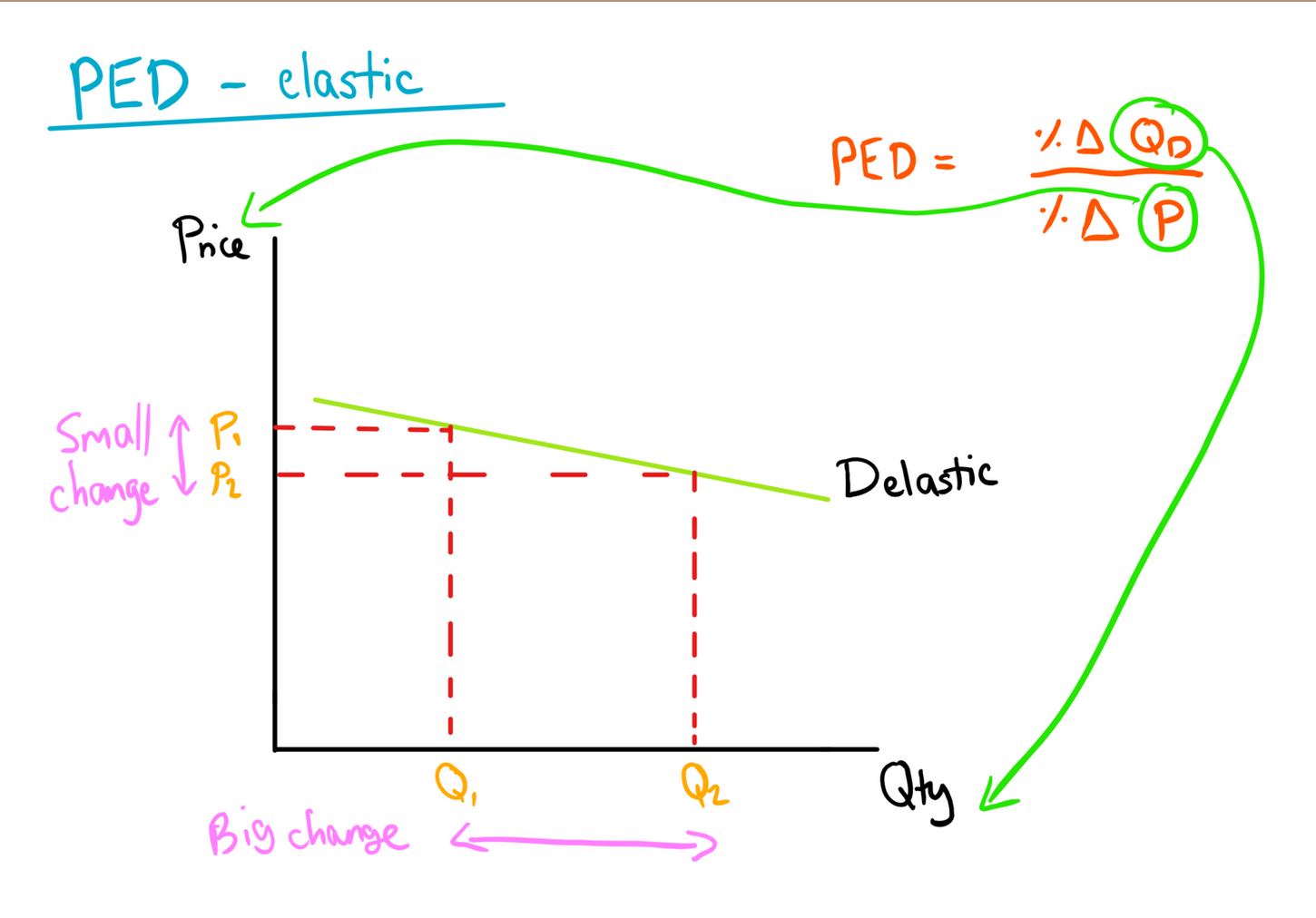Topic 4.1 - Individuals, firms, markets and market failure
Snapshot of the AQA syllabus topic area we’ll be covering in this post.
price, income and cross elasticities of demand: PRICE DETERMINATION IN COMPETITIVE MARKETS
AQA students must understand the following content [taken from the syllabus]
Be able to calculate price, income and cross elasticities of demand.
The relationship between income elasticity of demand and normal and inferior goods.
The relationship between cross elasticity of demand and substitute and complementary goods.
The relationships between price elasticity of demand and firms’ total revenue (total expenditure).
The factors that influence these elasticities of demand.
INFORMATION YOU NEED TO KNOW
Introduction:
Price, income, and cross elasticities of demand are key ideas in economics that help us understand consumer behaviour and market dynamics. This article investigates these elasticities of demand, their calculation, and the connections they show between different goods and services. We will also go over the variables that affect these elasticities, revealing the complexity of consumer decisions and market outcomes.
Calculating Elasticities of Demand:
The responsiveness of the quantity demanded to changes in price, income, or the price of related products is measured by the elasticities of demand. Price elasticity of demand, income elasticity of demand, and cross elasticity of demand are the three main kinds of elasticities.
Price Elasticity of Demand: Price elasticity of demand measures the percentage change in quantity demanded relative to the percentage change in price. It provides insights into consumer sensitivity to price fluctuations. If the demand for a good is highly responsive to price changes, it is considered elastic (elasticity > 1). In contrast, if demand is relatively unresponsive to price changes, it is considered inelastic (elasticity < 1).
Income Elasticity of Demand: Income elasticity of demand measures the percentage change in quantity demanded relative to the percentage change in income. It helps classify goods as normal or inferior. For normal goods, an increase in income leads to an increase in demand (elasticity > 0). In contrast, inferior goods experience a decrease in demand as income rises (elasticity < 0).
Cross Elasticity of Demand: Cross elasticity of demand measures the percentage change in quantity demanded of one good relative to the percentage change in the price of another related good. It helps identify whether goods are substitutes or complements. If the cross elasticity is positive, the goods are substitutes, meaning an increase in the price of one leads to an increase in demand for the other. If the cross elasticity is negative, the goods are complements, indicating an increase in the price of one leads to a decrease in demand for the other.
Relationships and Implications: For businesses and politicians, understanding these elasticities offers useful information. Relationships between market outcomes and elasticities include:
Price Elasticity of Demand and Total Revenue: The overall revenue of a company is impacted by price elasticity of demand. A fall in price causes a significantly larger increase in quantity required when demand is elastic, which raises overall revenue. A fall in price, on the other hand, results in a proportionately smaller rise in quantity required when demand is inelastic, which may result in lower overall revenue.
Income Elasticity of Demand and Normal/Inferior Goods: Demand's income elasticity shows how fluctuations in income affect consumer preferences. A positive income elasticity for normal goods means that demand rises as income rises. Inferior goods, on the other hand, have a negative income elasticity, which means that demand declines as income rises.
Cross Elasticity of Demand and Substitute/Complementary Goods: Cross elasticity of demand aids in revealing the relationships between different products. Positive cross elasticity indicates that two goods are substitutes because rising prices cause rising demand for both. When cross elasticity is negative, it means that two goods are complementary and that when one's price rises, the demand for the other falls.
Factors Influencing Elasticities of Demand:
Several factors influence the elasticities of demand, including:
Availability of substitutes: The presence of close substitutes makes demand more elastic, as consumers have alternative options.
Necessity vs. luxury: Necessities tend to have inelastic demand, while luxury goods tend to have elastic demand.
Time: Demand tends to be more elastic in the long run as consumers have more time to adjust their consumption patterns.
Consumer preferences: Consumer tastes and preferences influence the responsiveness of demand to price, income, and related goods.
Conclusion:
Consumer behaviour and market dynamics can be better understood by looking at factors like price, income, and cross elasticities of demand. Making educated judgements about pricing tactics, production planning, and market positioning is made easier for firms and governments by having a thorough understanding of these elasticities. Stakeholders can adjust to shifting market conditions and improve overall market performance by taking into account the relationships between elasticities and the factors that affect them.
SUPPORTING DIAGRAMS

![AQA ECONOMICS A-LEVEL SPECIFICATION SYLLABUS TOPIC 4.1 [PRICE INCOME AND CROSS ELASTICITIES OF DEMAND]](https://images.squarespace-cdn.com/content/v1/55b690f2e4b076db679cd340/d1b0ba0a-2361-4990-98f0-180d32eeb35d/AQA+ECONOMICS+A-LEVEL+SPECIFICATION+SYLLABUS+TOPIC+4.1++%5BPRICE+INCOME+AND+CROSS+ELASTICITIES+OF+DEMAND%5D)


